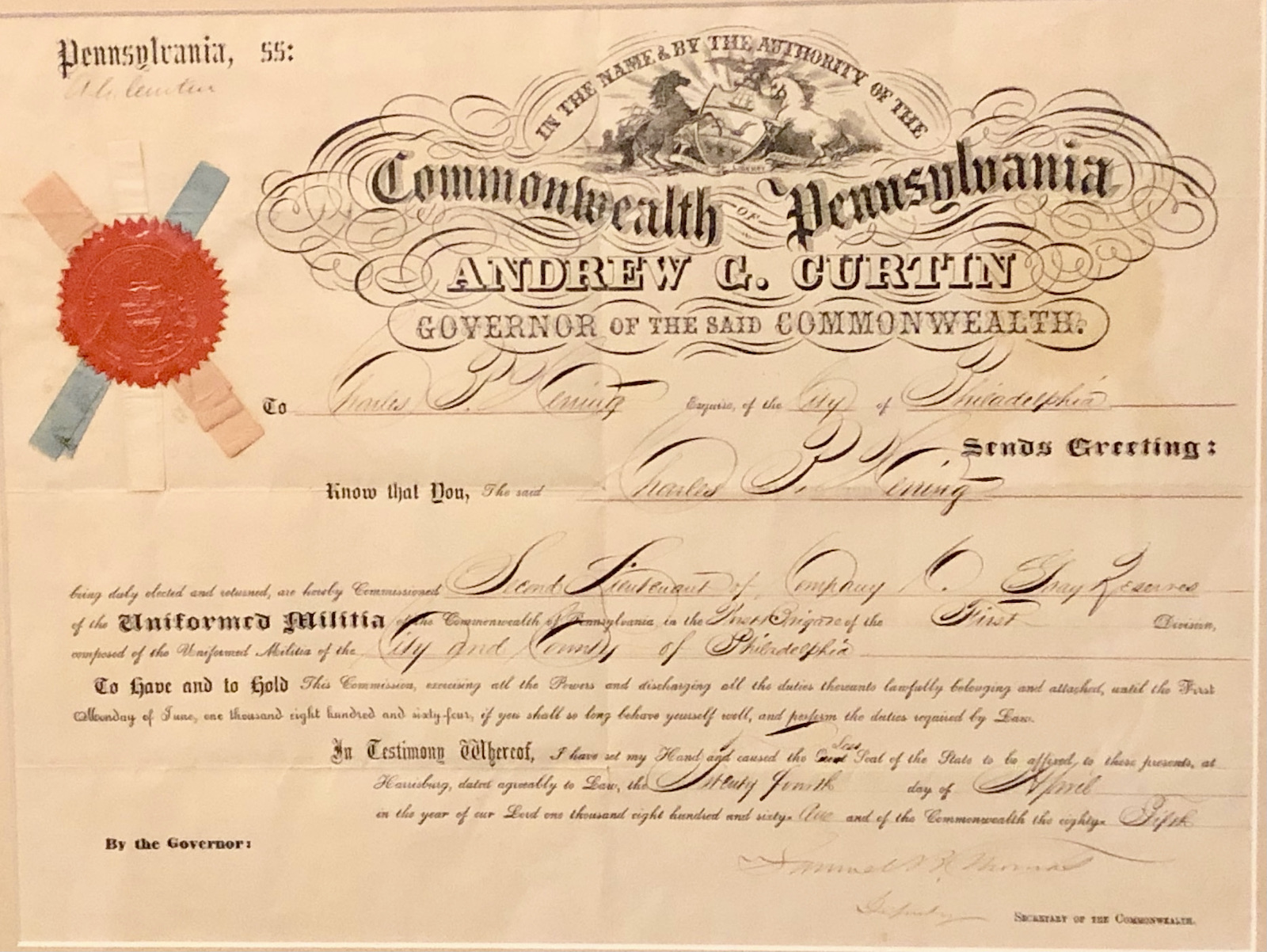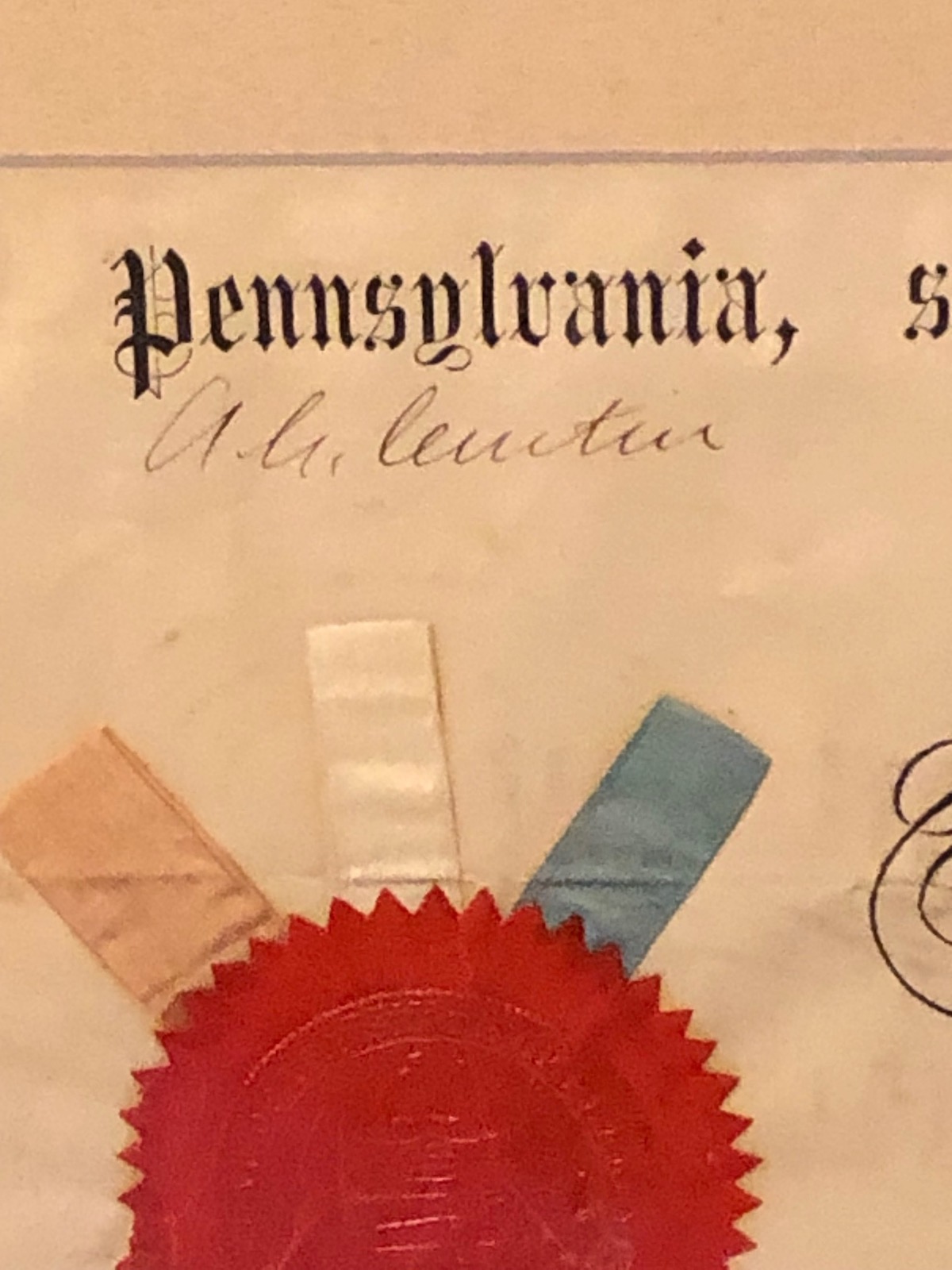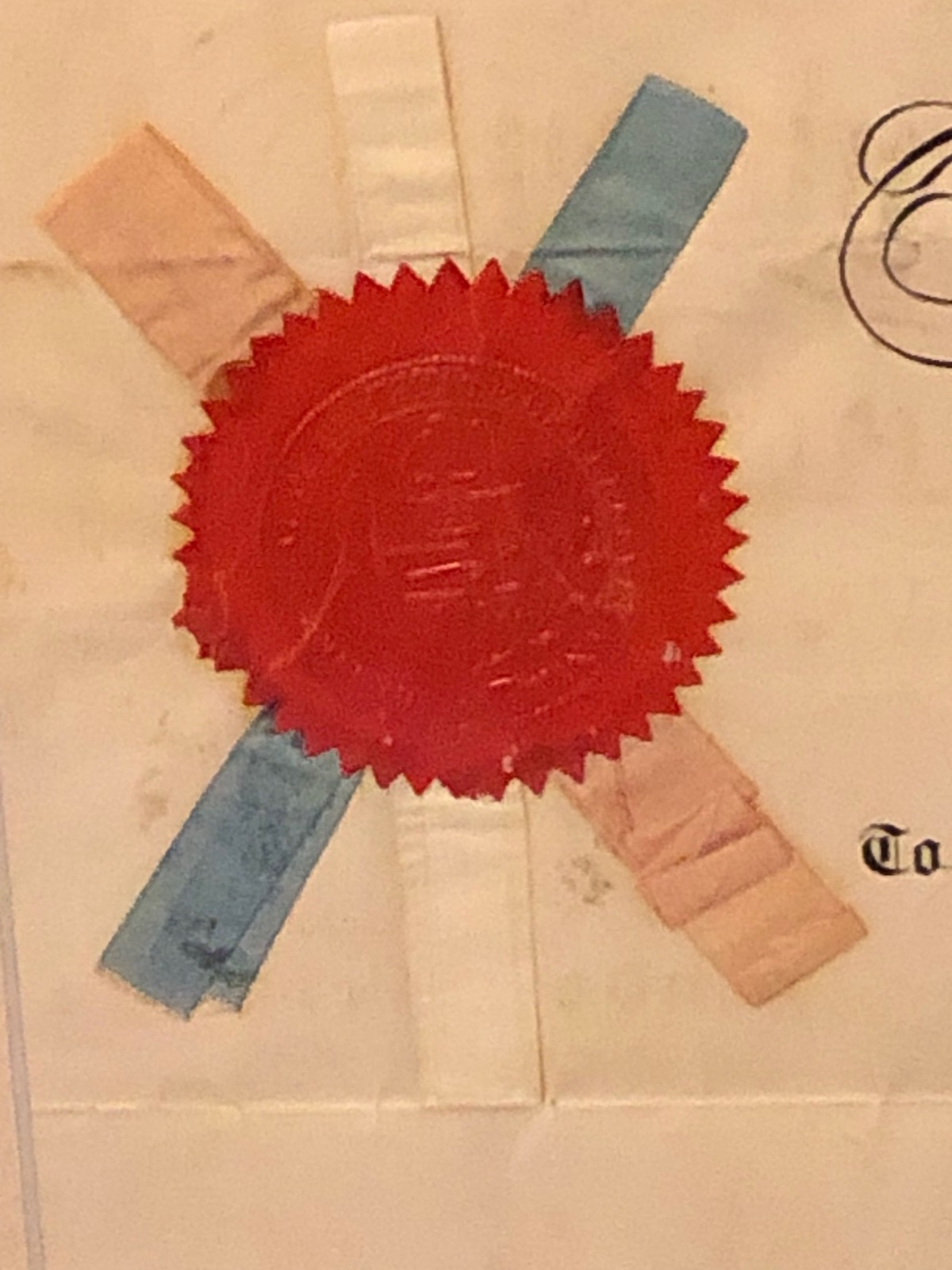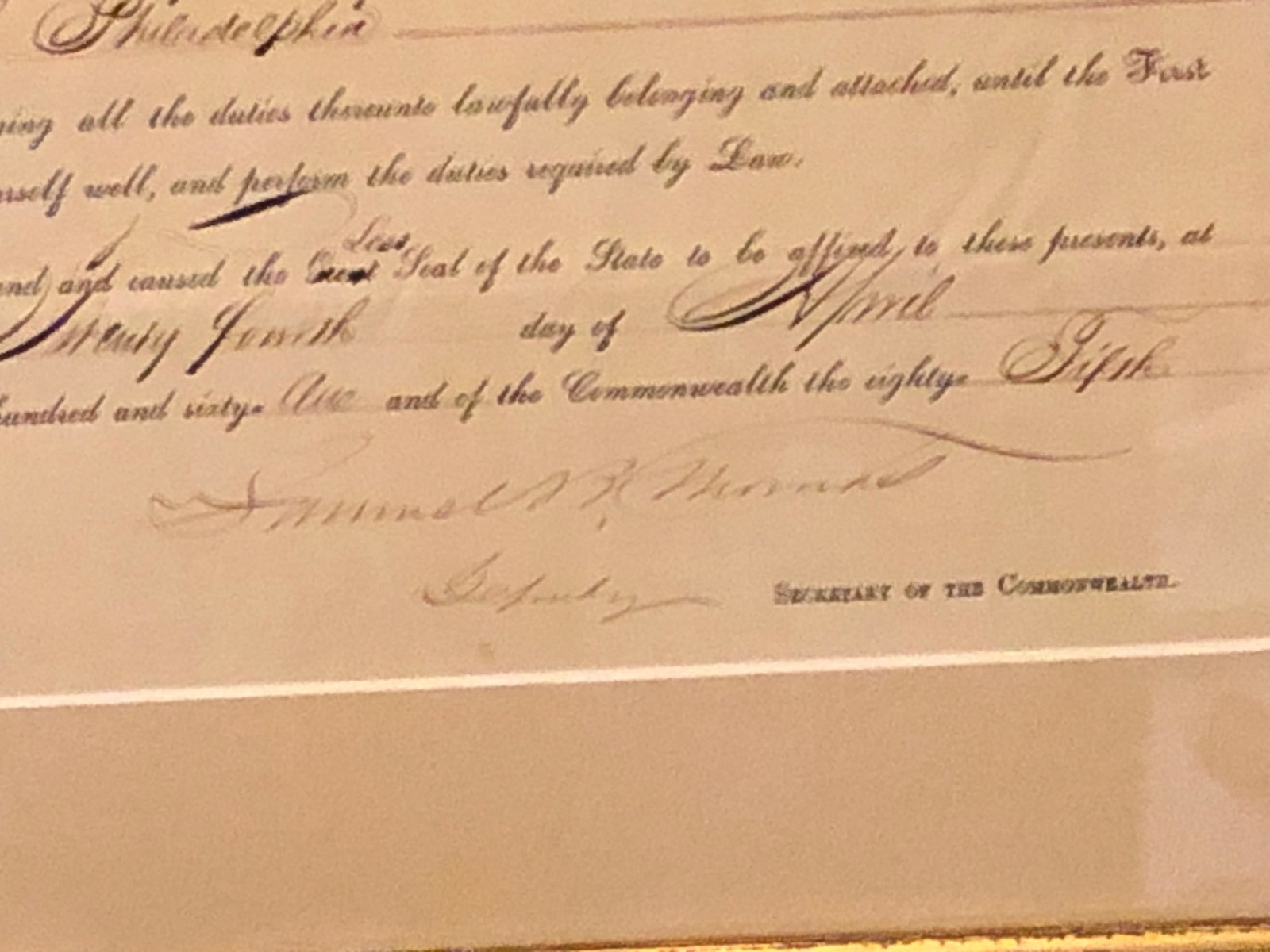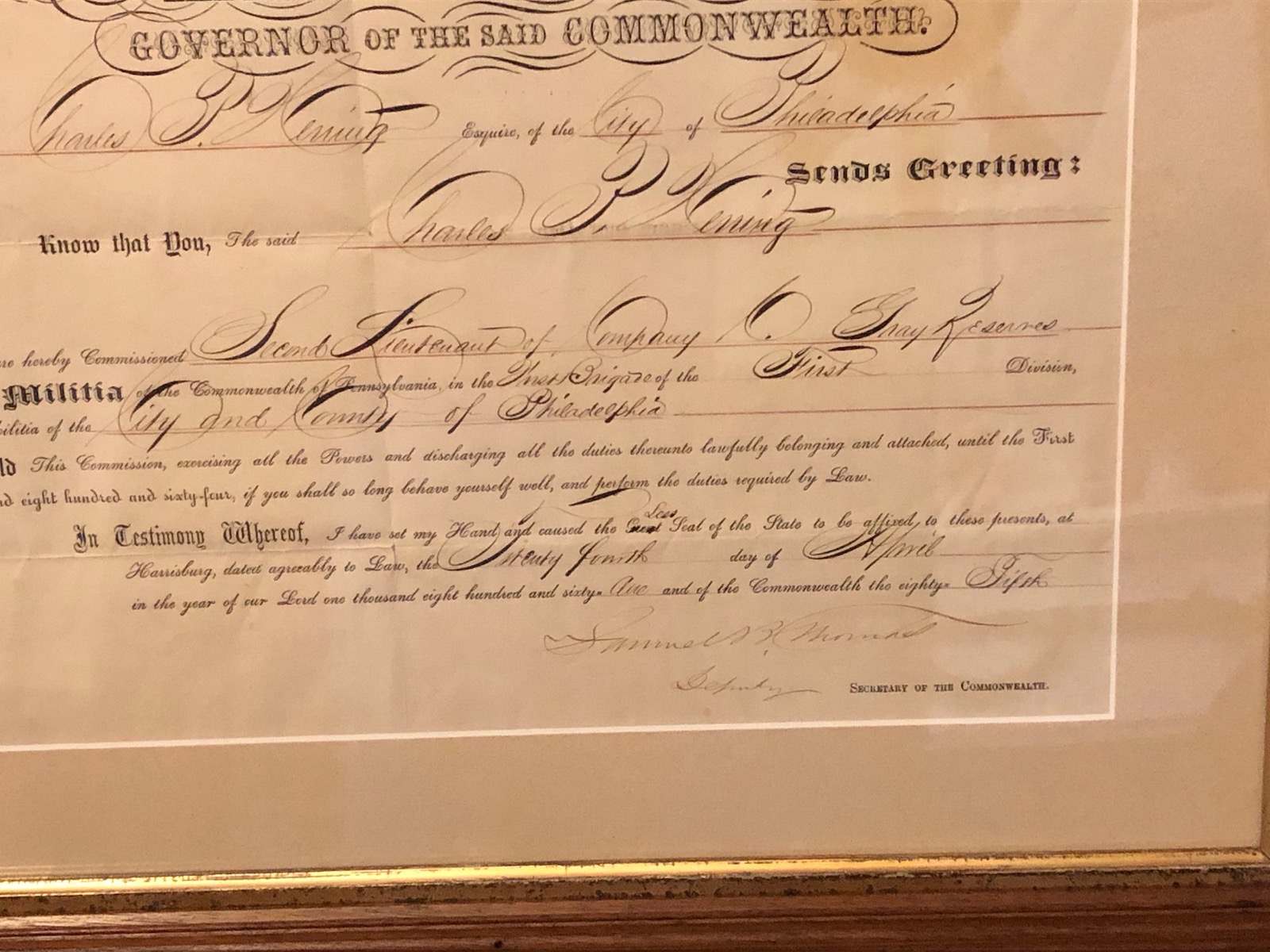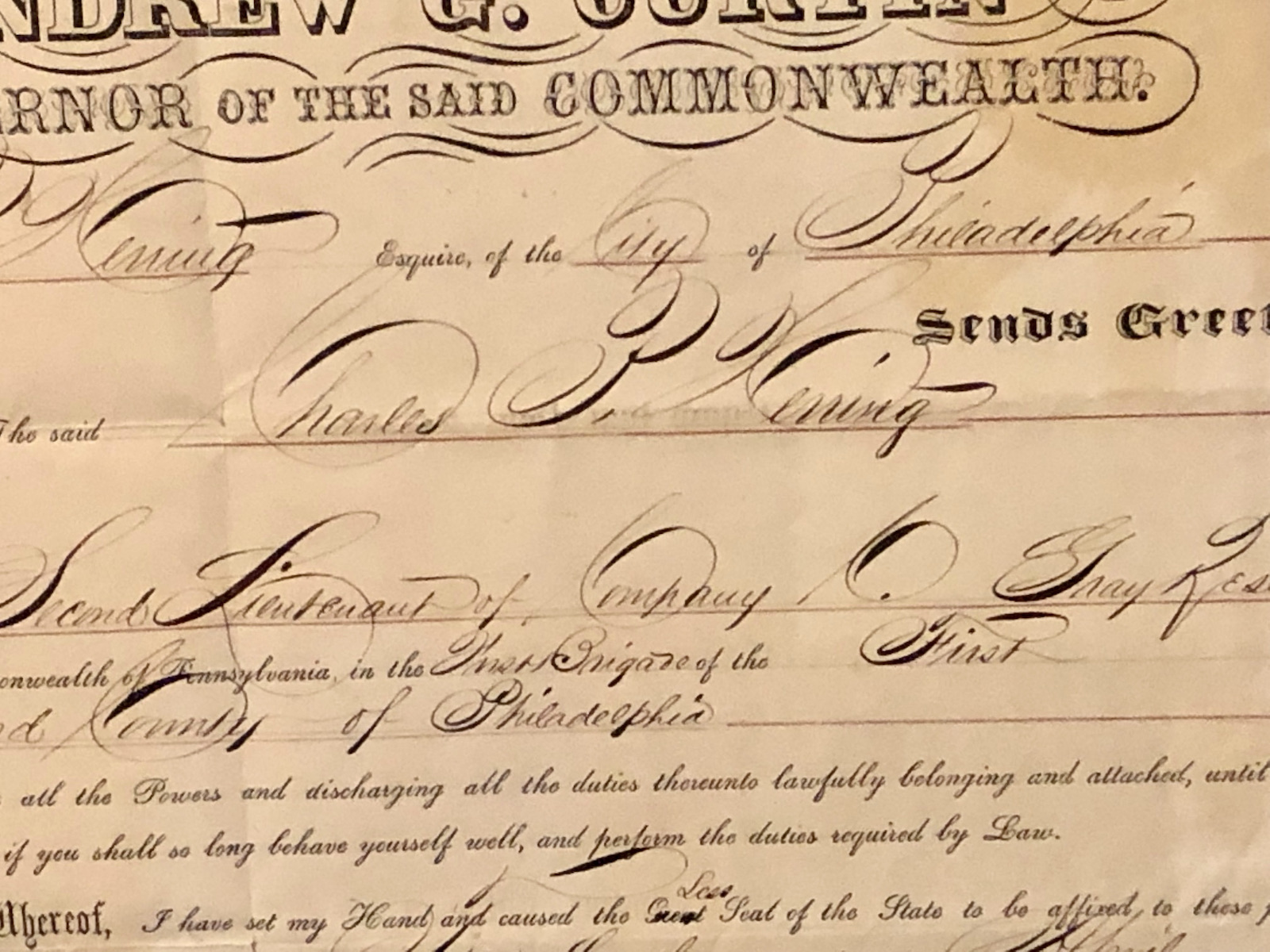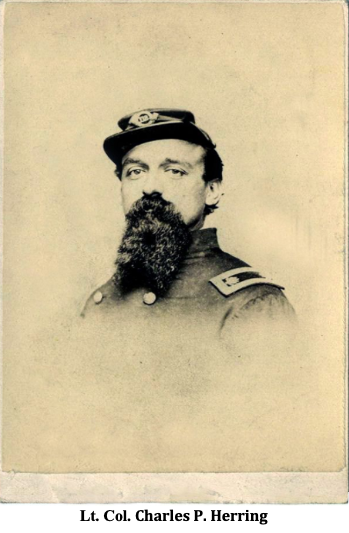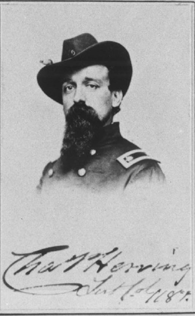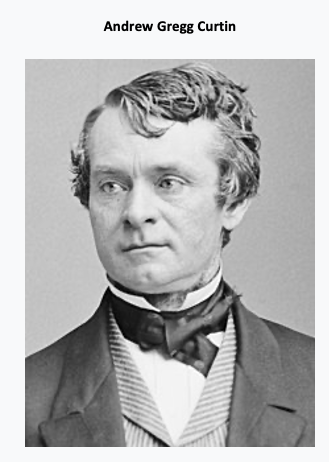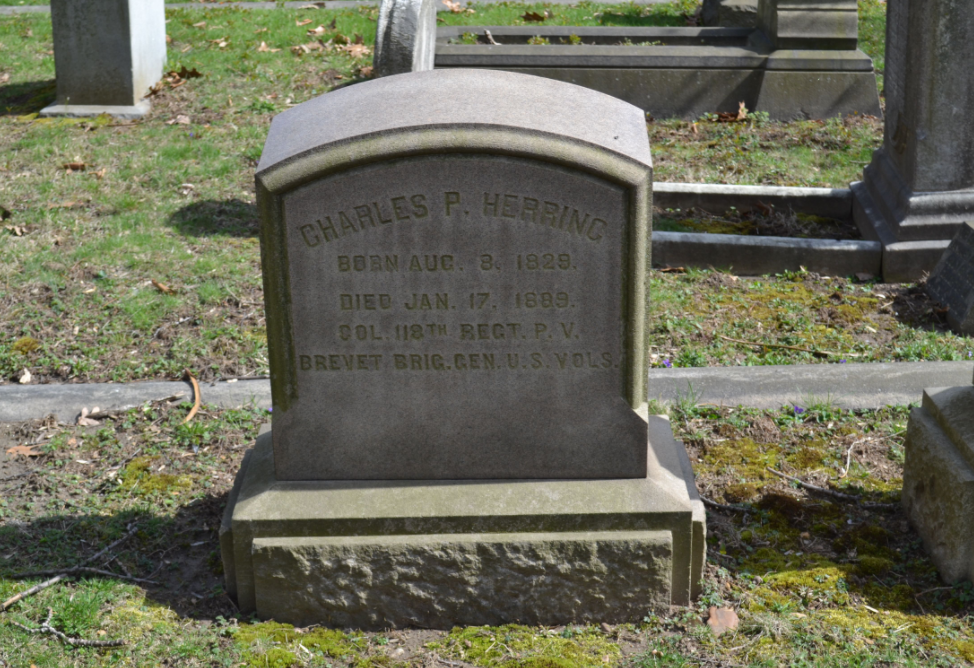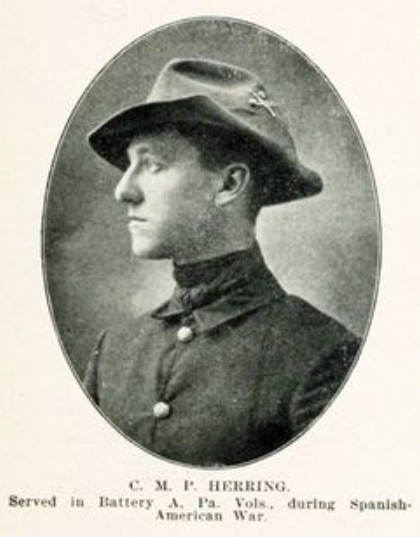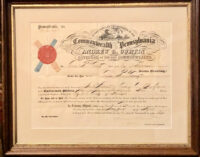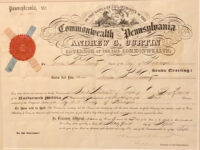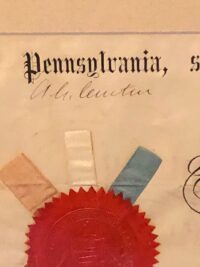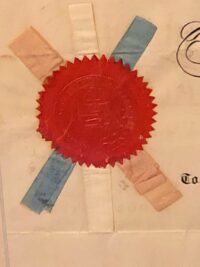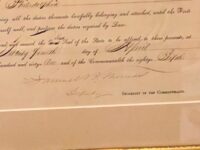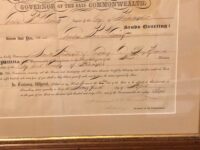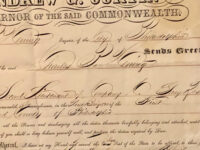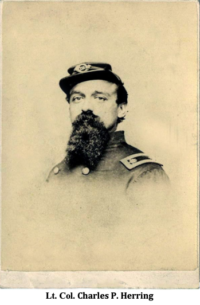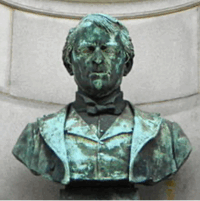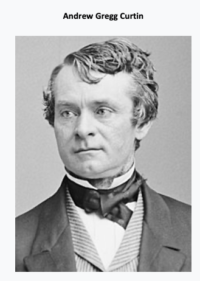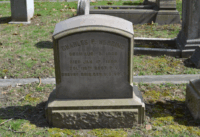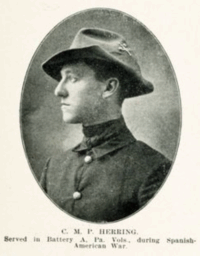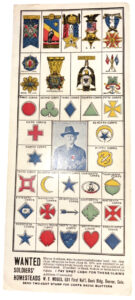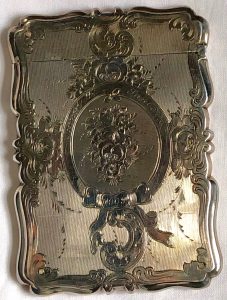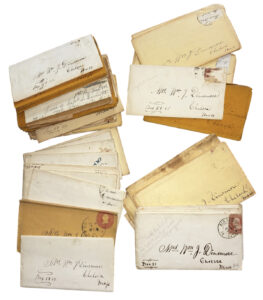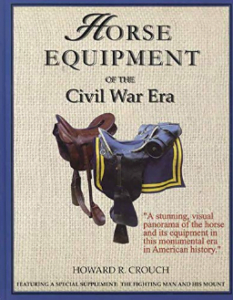Early Civil War Commission of Lt. Charles P. Herring (Later a Brig. General) in the Gray Reserves of Philadelphia Signed by Pennsylvania Wartime Governor Andrew Curtin
$375
Early Civil War Commission of Lt. Charles P. Herring (Later a Brig. General) in the Gray Reserves of Philadelphia Signed by Pennsylvania Wartime Governor Andrew Curtin – This elaborately executed commission was issued to Lt. Charles P. Herring as a member of the Philadelphia Gray Reserves, on April 24, 1861. The commission has the wax, state seal of Pennsylvania, superimposed over red, white and blue ribbons. Governor Andrew G. Curtin signed the commission in the upper right corner of the document. Lt. Herring would be commissioned, in August of 1862, into the Field and Staff of the 118th Pa. Infantry; he would remain in the army until June of 1865. During his service, Herring was wounded twice – Fredericksburg (12/13/62) and at Dabney’s Mills, Virginia (2/6/65); the second wound would result in the amputation of Herring’s right leg. Herring was promoted several times during his service – Lt. Col., later Colonel and Brigadier General (the latter two by brevet); the brevet to Brig. General was awarded for “gallant and meritorious conduct in the battle of Hatcher’s Run, Va.” This is an impressive commission for a brave, decorated officer; it remains in superior condition and has been archivally mounted in a period frame.
Measurements: Frame – H: 18”; W – 21
Sight Size – H: 14”; W – 17.5”
Charles Paine Herring
| Residence was not listed; 33 years old.
Enlisted on 8/22/1862 as a Major. On 8/22/1862 he was commissioned into Field & Staff PA 118th Infantry He was Mustered Out on 6/1/1865 at Washington, DC He was listed as: * Wounded 12/13/1862 Fredericksburg, VA * Wounded 2/6/1865 Dabney’s Mills, VA (Severely wounded in right leg, amputated) Promotions: * Lt Colonel 11/1/1863 * Colonel 12/2/1864 by Brevet * Brig-General 3/13/1865 by Brevet Other Information: born 8/8/1829 in Philadelphia, PA died 1/17/1889 in Philadelphia, PA Civil War Union Brevet Brigadier General. Entered the Civil War as a 2nd Lieutenant in the 1st Regiment, Grays Reserves of the Pennsylvania Militia. He was then appointed as an officer in the 118th Pennsylvania Volunteer Infantry, eventually rising to Lieutenant Colonel and commander of the regiment. He lost his right leg due to wounds received in action at the Battle of Dabney’s Mill, Virginia (February 6, 1865). He was brevetted Brigadier General, US Volunteers on March 13, 1865 for “gallant and meritorious conduct in the battle of Hatcher’s Run, Va.”.
|
||
| NAME: | Charles Paine Herring | |
| STATE SERVED: | Pennsylvania | |
| HIGHEST RANK: | Brigadier General | |
| BIRTH DATE: | 1829 | |
| DEATH DATE: | 1889 | |
| BIRTH PLACE: | Philadelphia, Pennsylvania | |
| ARMY: | Union | |
| PROMOTIONS: | Promoted to Full Major (118th PA Inf) Promoted to Full Lt Colonel Promoted to Brevet Brig-Gen | |
Charles Paine Herring
| Name: | Charles Paine Herring |
| Enlistment Age: | 33 |
| Birth Date: | 8 Aug 1829 |
| Birth Place: | Philadelphia, Pennsylvania |
| Enlistment Date: | 22 Aug 1862 |
| Enlistment Rank: | Major |
| Muster Date: | 22 Aug 1862 |
| Muster Place: | Pennsylvania |
| Muster Company: | S |
| Muster Regiment: | 118th Infantry |
| Muster Regiment Type: | Infantry |
| Muster Information: | Commission |
| Rank Change Date: | 1 Nov 1863 |
| Rank Change Rank: | Lt Colonel |
| Casualty Date: | 13 Dec 1862 |
| Casualty Place: | Fredericksburg, Virginia |
| Type of Casualty: | Wounded |
| Muster Out Date: | 1 Jun 1865 |
| Muster Out Place: | Washington, District of Columbia |
| Muster Out Information: | Mustered Out |
| Side of War: | Union |
| Survived War?: | Yes |
| Was Officer?: | Yes |
| Injured in Line of Duty?: | Yes |
| Death Date: | 17 Jan 1889 |
| Death Place: | Philadelphia, Pennsylvania |
| Additional Notes 2: | Rank Change 2 Date: 02 Dec 1864; Rank Change 2 Rank: Colonel; Rank Change 3 Date: 13 Mar 1865; Rank Change 3 Rank: Brigadier General; Casualty 2 Date: 06 Feb 1865; Casualty 2 Place: Dabney’s Mills, Virginia; Casualty 2 Casualty Type: Wounded; Casualty 2 Information: Severely wounded in right leg, amputated; |
118th PA Infantry
( 3-years )
| Organized: Camp Union, Philadelphia, PA on 8/30/62 Mustered Out: 6/1/65 at Washington, DCOfficers Killed or Mortally Wounded: 9 Officers Died of Disease, Accidents, etc.: 1 Enlisted Men Killed or Mortally Wounded: 132 Enlisted Men Died of Disease, Accidents, etc.: 111 (Source: Fox, Regimental Losses) |
| From | To | Brigade | Division | Corps | Army | Comment |
| Sep ’62 | Mar ’64 | 1 | 1 | 5 | Army of Potomac | |
| Mar ’64 | Jun ’65 | 3 | 1 | 5 | Army of Potomac | Mustered Out |
PENNSYLVANIA
118TH INFANTRY
(Three Years)
| One Hundred and Eighteenth Infantry.-Cols., Charles M.
Prevost, James Gwyn; Lieut.-Cols., James Gwyn, Charles P. Herring; Majs., Charles P. Herring, Henry O’Neill. The 118th, known as the Corn Exchange regiment, because a bounty of $10 for each man as well as the funds necessary for raising the regiment were furnished by the Philadelphia Corn Exchange, rendezvoused at Camp Union, Philadelphia, where it was mustered into the U.S. service on Aug. 30, 1862, for a three years’ term, and ordered at once to Washington. With the 1st brigade, 1st division, 5th corps, it reached Antietam on Sept. 16, but was held in reserve during the ensuing battle. At Blackford’s ford, near Shepherdstown, it received a baptism of blood on Sept. 20, and left 282 men on the field. Col. Prevost was made brevet brigadier-general for gallantry in this battle. The regiment moved south in early November, and took part in the battle of Fredericksburg, where it joined in the assault on Marye’s heights and suffered severely. After the “Mud March,” it returned to camp at Falmouth, which it occupied until April 27, 1863. It was closely engaged at Chancellorsville and was in camp at Falmouth until June 10, when the northward movement was commenced. It acted as support in the cavalry engagements of Aldie, Upperville and Middleburg and reached Gettysburg early on July 2. At 4 o’clock that afternoon it went into action in support of Gen. Sickles’ corps and was closely engaged with considerable loss, but was inactive on the 3rd. It then joined in the pursuit which followed the battle and encountered the enemy on July 4. At Warrenton in August and September, about 300 recruits were receive, and after participation in the Mine Run campaign the regiment went into winter quarters at Beverly ford. On May 1, 1864, it started for the Wilderness, where it was engaged. It also fought at Laurel Hill, the North Anna river, Mechanicsville, at Bethesda Church and at Petersburg. During the siege of Petersburg the 118th remained in the trenches until Aug. 15; then joined in the movement upon the Weldon railroad, was posted near Yellow house in September joined in the Hatcher’s run movement in October, the raid on the Weldon railroad in December, and the engagement at Dabney’s mill in Feb., 1865. On April 1, it participated in the battle of Five Forks and continued the pursuit to Appomattox Court House, where its brigade received the arms and flags of Lee’s army. On April 15, it started for Washington, where it was mustered out on June 1, 1865. The recruits were transferred to the 91st Pa. Infantry. |
Charles Paine Herring
| BIRTH | 8 Aug 1829
Philadelphia, Philadelphia County, Pennsylvania, USA |
| DEATH | 17 Jan 1889 (aged 59)
Philadelphia, Philadelphia County, Pennsylvania, USA |
| BURIAL | Woodlands Cemetery
Philadelphia, Philadelphia County, Pennsylvania, USA Show Map |
| PLOT | Section M, Lot 85 |
Andrew Gregg Curtin
| Andrew Gregg Curtin | |
| 15th Governor of Pennsylvania | |
| In office January 15, 1861 – January 15, 1867 |
|
| Preceded by | William F. Packer |
| Succeeded by | John W. Geary |
| Member of the U.S. House of Representatives from Pennsylvania’s 20th district |
|
| In office March 4, 1881 – March 3, 1887 |
|
| Preceded by | Seth Hartman Yocum |
| Succeeded by | John Patton |
| United States Ambassador to Russia | |
| In office October 28, 1869 – July 1, 1872 |
|
| President | Ulysses S. Grant |
| Preceded by | Cassius Marcellus Clay |
| Succeeded by | James Lawrence Orr |
| Personal details | |
| Born | April 22, 1815 or April 22, 1817 Bellefonte, Pennsylvania, U.S. |
| Died | October 7, 1894 (aged 77 or 79) Bellefonte, Pennsylvania, U.S. |
| Political party | Whig, Republican, Democratic |
| Spouse | Katharine Irvine Wilson |
| Profession | Politician, lawyer |
| Signature | |
| Pennsylvania Historical Marker | |
| Designated | October 9, 1950 |
| Location | Bellefonte |
Andrew Gregg Curtin (April 22, 1815/1817 – October 7, 1894) was a U.S. lawyer and politician. He served as the Governor of Pennsylvania during the Civil War, helped defend his state during the Gettysburg Campaign, and led organization of the creation of the National Cemetery and the ceremony that included Abraham Lincoln’s Gettysburg Address.
Early life
Curtin was born in Bellefonte, Pennsylvania. Sources vary as to his birth date. Some list April 22, 1815;[1][2] others list April 22, 1817.[3] Curtin’s gravestone uses the 1815 date.[4] His parents were Roland Curtin Sr., a wealthy Irish-born iron manufacturer from County Clare, and Jane (née Gregg) Curtin, the daughter of U.S. Senator Andrew Gregg. His father, with Miles Boggs, established the Eagle Ironworks at Curtin Village in 1810.
Curtin’s family was prominent in Pennsylvania politics and in the Civil War. He was the great-grandson of James Potter, the vice-president of Pennsylvania, and was the grandson of Andrew Gregg, also a prominent Pennsylvania politician. He was the uncle of John I. Gregg and cousin of David McMurtrie Gregg, both Union generals in the Civil War. He was also a cousin of Col. John I. Curtin.
He attended Bellefonte Academy, Dickinson College, and the Dickinson School of Law and was employed as a lawyer.[5]
Career
Curtin first entered politics in the 1840 election, where he campaigned for Whig presidential candidate William Henry Harrison.[6] In 1855, Governor James Pollock appointed him as Superintendent of Public Schools.[6]
Governor of Pennsylvania
With the collapse of the Whigs, Curtin switched to the newly formed Republican Party and successfully ran for governor of Pennsylvania in 1860. Curtin won re-election to the office in 1863. In the 1860 presidential election, Curtin helped Abraham Lincoln win the Republican nomination.[6]
Bust of Andrew Gregg Curtin (1912), by Moses Jacob Ezekiel, Smith Memorial Arch, Philadelphia, Pennsylvania
Curtin was a strong supporter of President Lincoln‘s policies in the Civil War, and Curtin committed Pennsylvania to the war effort.[6] Curtin organized the Pennsylvania Reserves into combat units, and oversaw the construction of the first Union military camp for training militia. It opened in an agricultural school nearby Harrisburg as Camp Curtin on April 18, 1861, and more than 300,000 men were drilled there during 4 years. In the years that followed, Curtin became a close friend and confidant of Abraham Lincoln, visiting the White House several times in order to converse about the status of the war effort.[7]
Curtin was very active during the Gettysburg Campaign, working with Major General Darius N. Couch and Major Granville O. Haller to delay Robert E. Lee‘s Army of Northern Virginia and prevent it from crossing the Susquehanna River. Major General George G. Meade, a Pennsylvania officer whom Curtin had recommended for brigadier general and command of one of the Pennsylvania reserve brigades in 1861, defeated Lee in the Battle of Gettysburg.[7]
After the Battle of Gettysburg, Governor Curtin was the principal force behind the establishment of the National Cemetery there. Through his agent, David Wills, Curtin procured the attendance of President Abraham Lincoln at the dedication of the cemetery. Governor Curtin was sitting with Lincoln on the platform on November 19, 1863, when Lincoln delivered his Gettysburg Address.[7]
In his first term, Governor Curtin suffered a severe breakdown from the stresses of war. Secretary of State Eli Slifer handled governmental affairs during the increasingly frequent periods when Curtin was incapacitated. President Lincoln offered the governor a diplomatic position abroad, but he chose to run for reelection in 1863.[7]
To coordinate Union war efforts, Curtin convened the Loyal War Governors’ Conference on September 24 and 25, 1862, in Altoona. This event was one of his most significant contributions to the Union war effort. He formed the Pennsylvania State Agency in Washington, and another branch in Nashville, Tennessee, to provide support for wounded soldiers on the battlefield and returned home. He also founded the state-funded Orphan’s School to aid and educate children of military men who had died for the Union cause.[7]
Soon after the war, Curtin was elected a 3rd Class Companion (i.e. honorary member) of the Military Order of the Loyal Legion of the United States in recognition of his support for the Union during the war.[7]
Later career
After the war, Curtin lost his party’s Senate nomination to Simon Cameron, and was appointed Ambassador to Russia by President Ulysses S. Grant. Curtin later switched to the Democratic Party, and served as a Congressman from 1881 until 1887.[5]
Personal life
On May 30, 1844, Curtin was married to Katharine Irvine Wilson (1821–1903), a daughter of Dr. William Irvine Wilson and Mary (née Potter) Wilson.[8] Together, they were the parents of:[7]
- Mary Curtin (1845–1927), who married George Fairlamb Harris.[8]
- Martha Irvin Curtin (1848–1935), who married Captain Kidder Randolph Breese.[8]
- Myron Stanley Curtin (1854–1857), who died young.[8]
- Katherine Irvine Wilson Curtin (1859–1930), who married Moses Dewitt Burnet.[8]
- Bessie Elliott Curtin (1865–1866), who died young.[8]
He died at his birthplace of Bellefonte, Pennsylvania, and is buried there in Union Cemetery.[6]


